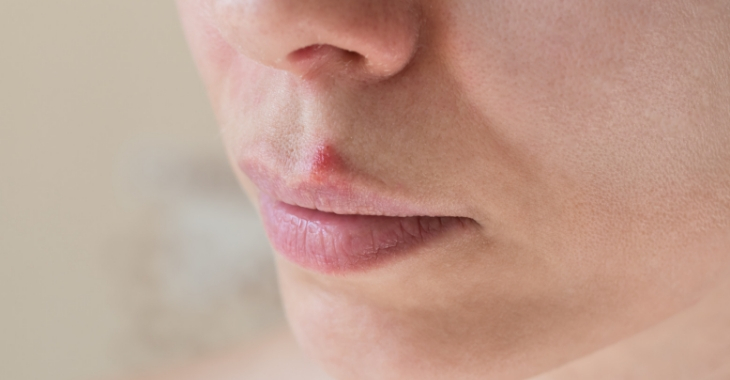What are Fever Blisters?

Cold sores and fever blisters are actually the same and are symptoms of a herpes simplex virus type one (HSV1). Blisters or lesions that occur around the mouth area are often breakouts of HSV1, but many people do not understand this common disease. Knowing what triggers can cause these outbreaks and the treatments options available can help you minimize the pain and embarrassment of a fever blister on your mouth or face.
How HSV1 is Contracted
Did you know that about 80% of adults have HSV1, even if they do not have cold sore or fever blister outbreaks? Most people get exposed to the herpes virus as a child – since it is so prevalent, any exposure of the virus to a break in the skin can allow the virus in the body. A fever blister does not occur immediately; at some point the initial reaction to the HSV1 infection will occur, usually causing some flu-like systems for a few days before a fever blister appears.
Triggers and Breakouts
Most people with HSV1 do not have regular cold sores or fever blisters. Only about 1/3 of those with the virus will have one or more outbreaks a year, which decreases for most people as they get older. Triggers can include illnesses like a cold or flu (thus, the names for the breakouts), stress, exposure to excessive UV rays, immune system issues and hormonal factors.
Treatments for Fever Blisters
The best way to control fever blisters is to work with a dermatologist to find the best treatment for you. Some options can include OTC medications, but for severe outbreaks, a dermatologist can prescribe oral or topical medications that can reduce the number and lengths of outbreaks.
Posted on behalf of:
Medical Dermatology Specialists
5730 Glenridge Drive, Suite T-100
Atlanta GA 30328
(404) 939-9220
The information provided on this website, including text, graphics, images, and other materials, is intended solely for informational purposes and should not be used as a substitute for professional medical advice, diagnosis, or treatment.
)